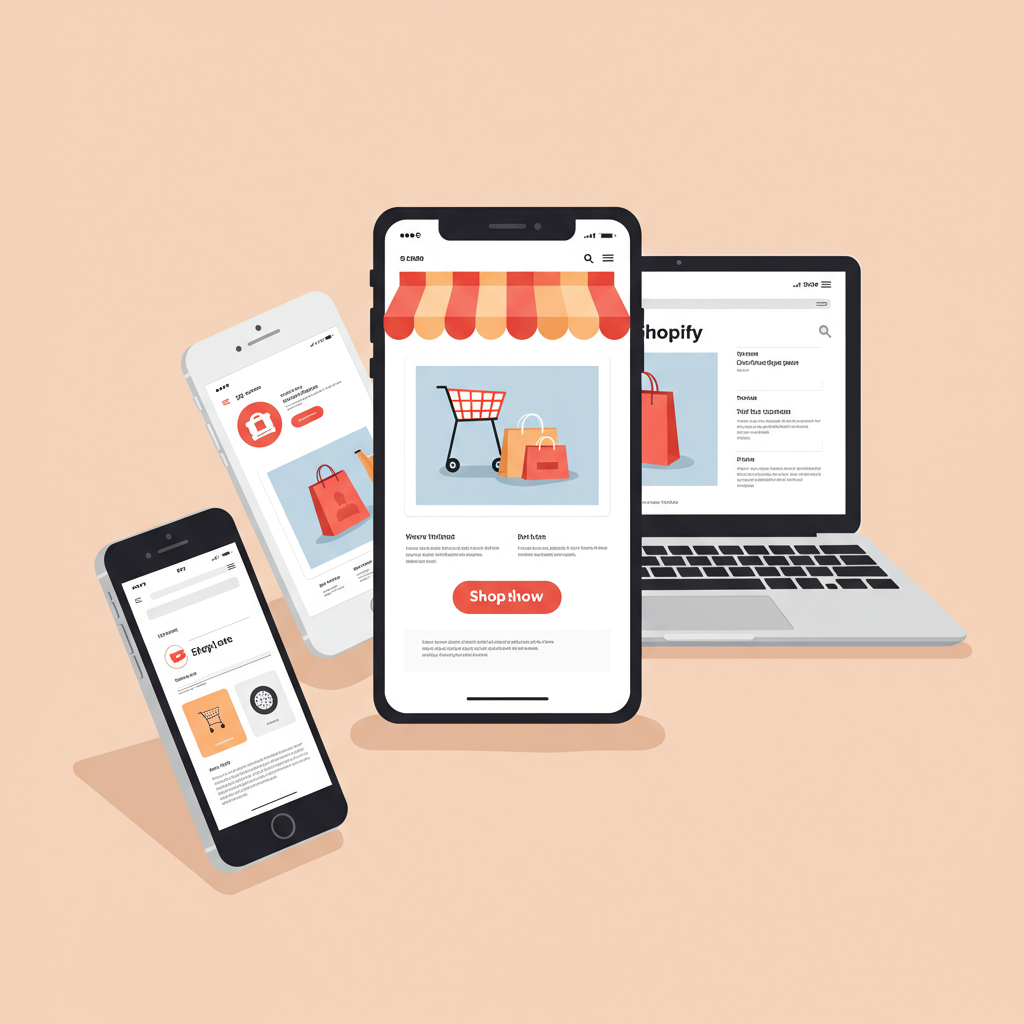Why designing for the smallest screen first is the key to e-commerce success in today’s mobile-dominated world.
As an e-commerce enthusiast and someone deeply involved with Shopify, I’ve seen firsthand how the landscape of online shopping has shifted dramatically.
Gone are the days when desktop computers were the primary way customers interacted with your online store. Today, the vast majority of browsing, discovering, and purchasing happens right from the palm of their hand.
This fundamental change is precisely why I believe designing a mobile-first Shopify store isn’t just a good idea; it’s an absolute necessity for your business’s survival and growth.
Think about your own habits. How often do you reach for your phone to quickly check a product, compare prices, or make an impulse purchase? My guess is, quite often.
Statistics consistently show that mobile traffic accounts for over 70% of all e-commerce traffic, and this number is only climbing. If your store isn’t optimized for these users, you’re essentially turning away a massive segment of your potential customer base.
A clunky, slow, or difficult-to-navigate mobile experience leads directly to high bounce rates and abandoned carts. It frustrates customers and damages your brand’s reputation.
Conversely, a seamless mobile experience builds trust, encourages engagement, and significantly boosts your conversion rates. It makes shopping a pleasure, not a chore.
So, what does “mobile-first” truly mean in practice? It’s not just about making your desktop site shrink to fit a smaller screen. It’s about designing with the smallest screen in mind first, then progressively enhancing for larger screens.
The first principle is **Content Prioritization**. On a mobile screen, real estate is precious. You must ruthlessly prioritize what information is absolutely essential for the user to see immediately.
This means stripping away clutter and focusing on your core message and calls to action. What does the customer *need* to know to make a decision?
Next, **Speed is Paramount**. Mobile users are often on the go, possibly with less stable internet connections. Every millisecond counts. A slow loading site is a death knell for mobile conversions.
Then there’s **Simplicity and Clarity**. Navigation should be intuitive, text should be legible, and buttons should be easily tappable. Avoid complex layouts or tiny elements.
Finally, **Touch-Friendliness** is key. Your design must accommodate fingers, not mouse pointers. This means appropriately sized buttons, ample spacing between elements, and swipe gestures where appropriate.
My journey with Shopify has taught me that the foundation of a great mobile-first store begins with your theme. Always choose a responsive theme.
Shopify’s theme store offers many excellent options that are built with responsiveness in mind. When evaluating, I always check their mobile previews thoroughly.
One of the biggest culprits for slow mobile sites is unoptimized images. High-resolution images are beautiful on desktop, but they can cripple mobile performance.
I always recommend compressing images before uploading them to Shopify. Tools like TinyPNG or Shopify’s built-in image optimization can help immensely. Use next-gen formats like WebP where possible.
Also, consider lazy loading for images below the fold. This ensures that only images visible on the screen load initially, speeding up the perceived load time.
Mobile navigation needs to be streamlined. The ubiquitous “hamburger menu” (three horizontal lines) is a standard for a reason – it saves space and is universally recognized.
I also suggest implementing sticky headers or navigation bars. This keeps your menu, cart, and search accessible as users scroll down the page, improving usability.
Your product pages are where conversions happen. On mobile, keep product descriptions concise and scannable. Use bullet points for key features.
Ensure your product images are high-quality but optimized, and allow for easy swiping between them. The “Add to Cart” button should be prominent, large, and ideally sticky as well.
The checkout is the final hurdle. Simplify it as much as possible. Offer guest checkout options to reduce friction.
Enable autofill for address fields and integrate popular mobile payment options like Apple Pay, Google Pay, and Shop Pay. My experience shows these significantly reduce abandonment.
After implementing these changes, I can’t stress enough the importance of rigorous testing. Use Shopify’s theme customizer to preview on different devices.
Better yet, test on actual physical devices – your own phone, a friend’s tablet, etc. Check different browsers too. This hands-on approach reveals real-world issues.
Shopify’s app store offers many tools specifically for mobile optimization, from speed boosters to mobile-specific pop-ups. Explore them, but don’t overdo it, as too many apps can slow you down.
Finally, continuously monitor your mobile analytics. Look at bounce rates, conversion rates, and time on page for mobile users. These metrics will tell you what’s working and what needs further refinement.
What are your biggest challenges when it comes to optimizing your Shopify store for mobile users? I’d love to hear your thoughts.
Embracing a mobile-first approach for your Shopify store isn’t just about keeping up with trends; it’s about putting your customer first.
By focusing on speed, simplicity, and an intuitive user experience on mobile, you’re not just building a website; you’re crafting a powerful, accessible shopping destination.
I truly believe that investing in mobile optimization will yield significant returns in customer satisfaction, brand loyalty, and ultimately, your bottom line. Start today, and watch your mobile conversions soar!






